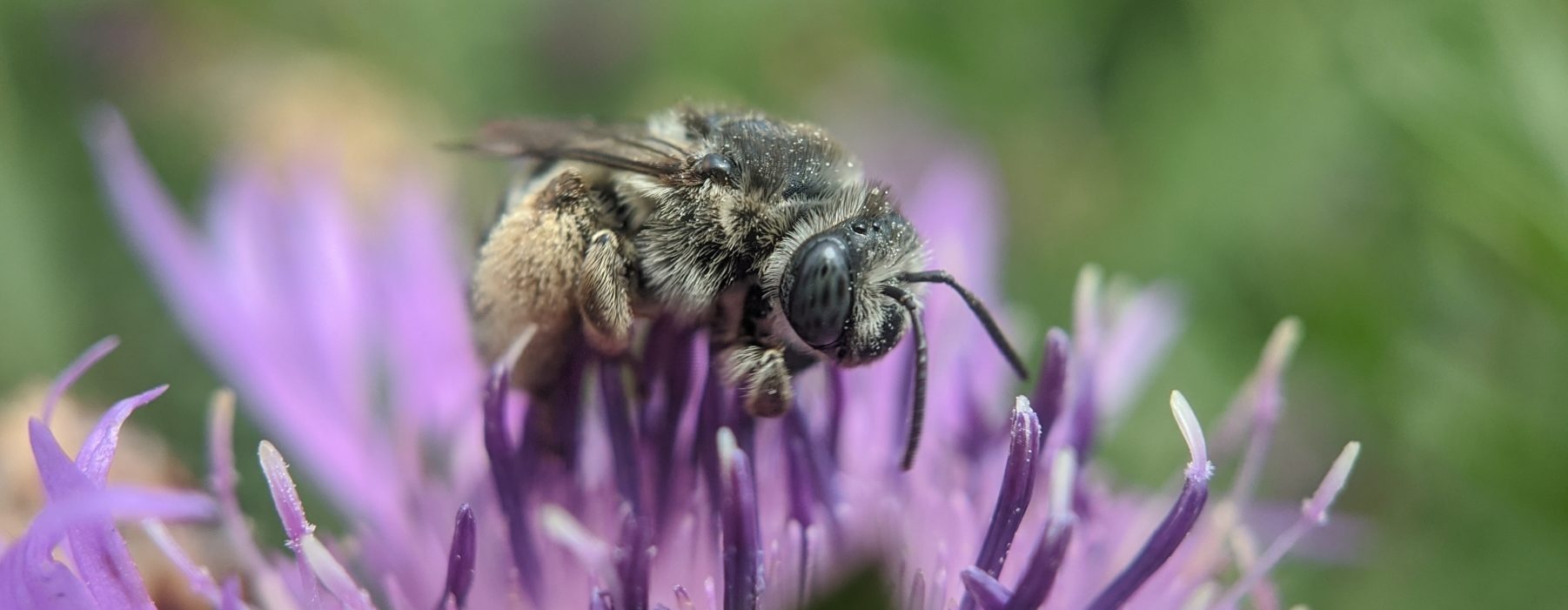Photographing tiny, fast insects is not a skill most people are born with. Even for skilled nature photographers, it can be very frustrating at times, but with practice can be doable for most anyone, even with a smartphone. Hopefully the suggestions below will be helpful, though practice and patience are your best friend in this endeavor.
Move slowly
Bees can be very sensitive to motion and will take off if you move too fast. Move slowly and the bee will likely not even notice you.
Pay attention to lighting
Good light can make anyone feel like Ansel Adams. Bad lighting can make insect photography next to impossible. In general, the first few hours of the day and the early evening have the best light. Additionally, bees are often slower during the cooler parts of the day. During challenging conditions (bright sun, harsh shadows), try using your body or hand as a sun shield or rotate your body to avoid shadows.
Sit and Wait
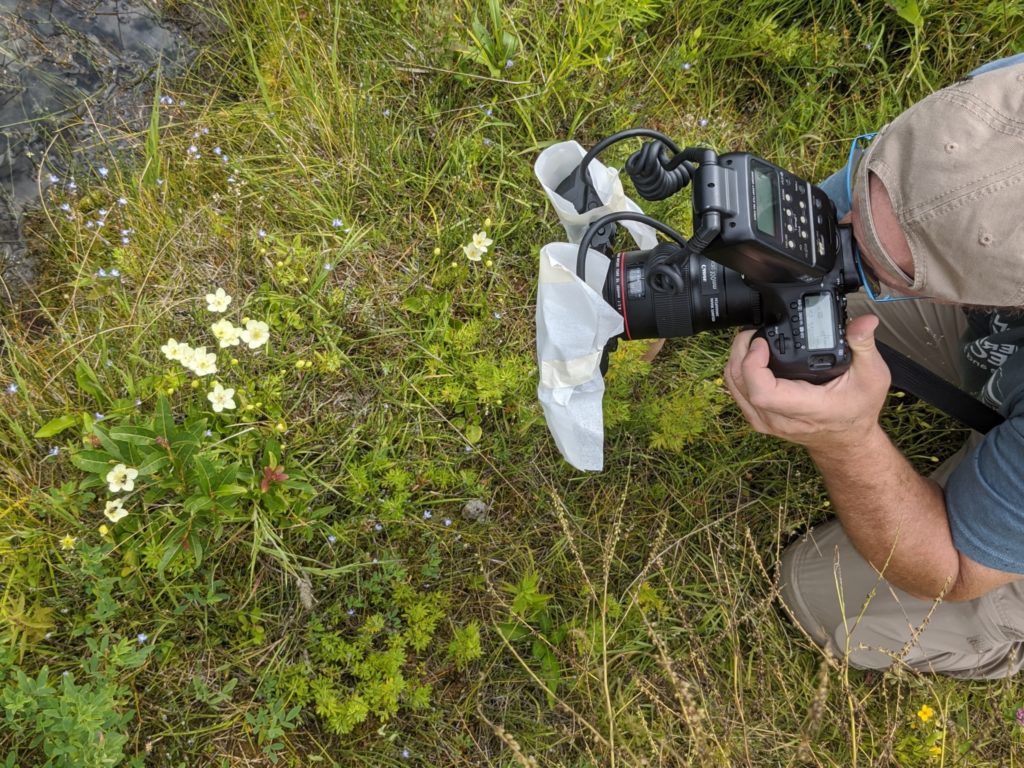
Kent McFarland waiting for a Parnassia Miner (Andrena parnassiae)
Some bees never sit still and are impossible to follow. In many cases, the easiest way to get good photos is to set up on a group of flowers with lots of activity and wait. Get comfortable, dial in your camera settings, and let the bees come to you.
The Vial Method
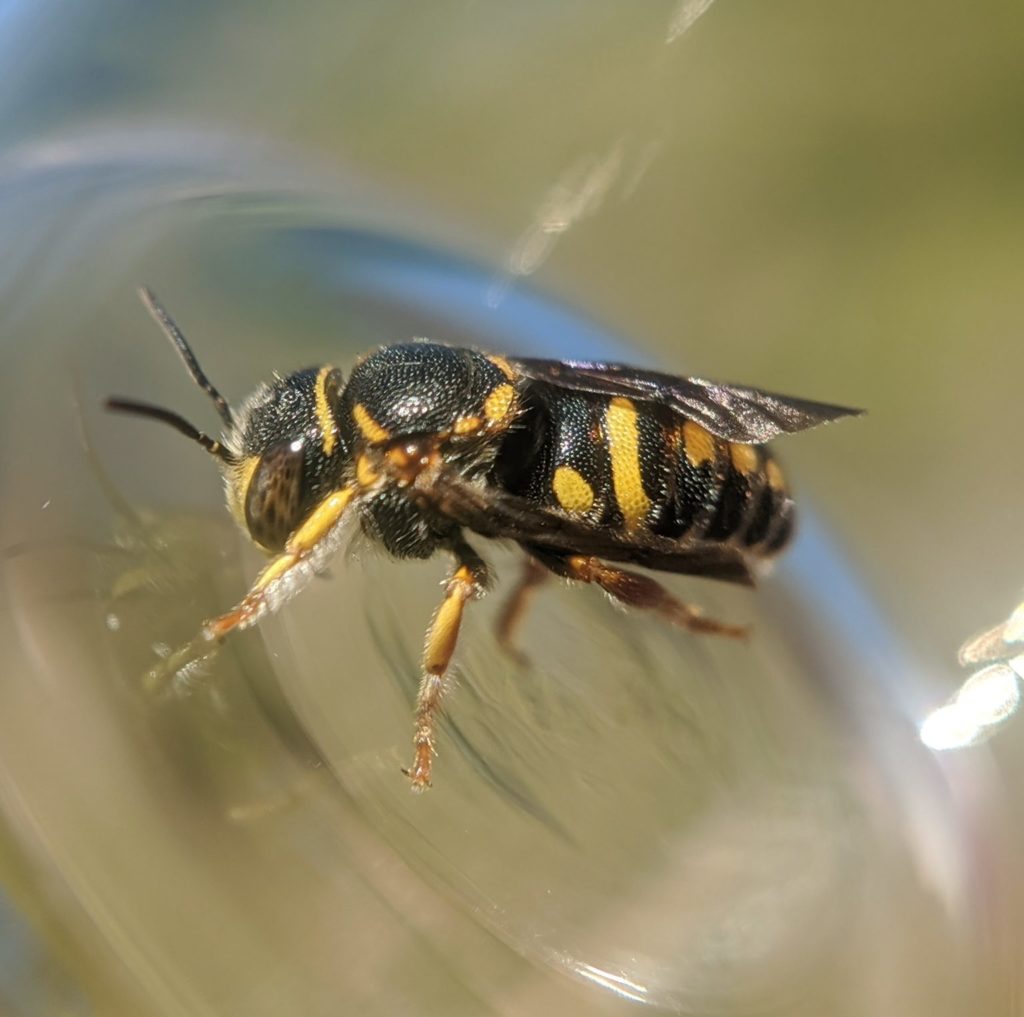
A Northern Rotund-resin Bee (Anthidiellum notatum) in a vial for photographs
If you want a more active experience, or don’t have a long lens, a bug net and glass vial can be great for getting useful photographs. The smaller the vial, the harder it is to get the bee into it, but the less the bee will be able to move around. We have some netting advice here.
The Refrigerator Method
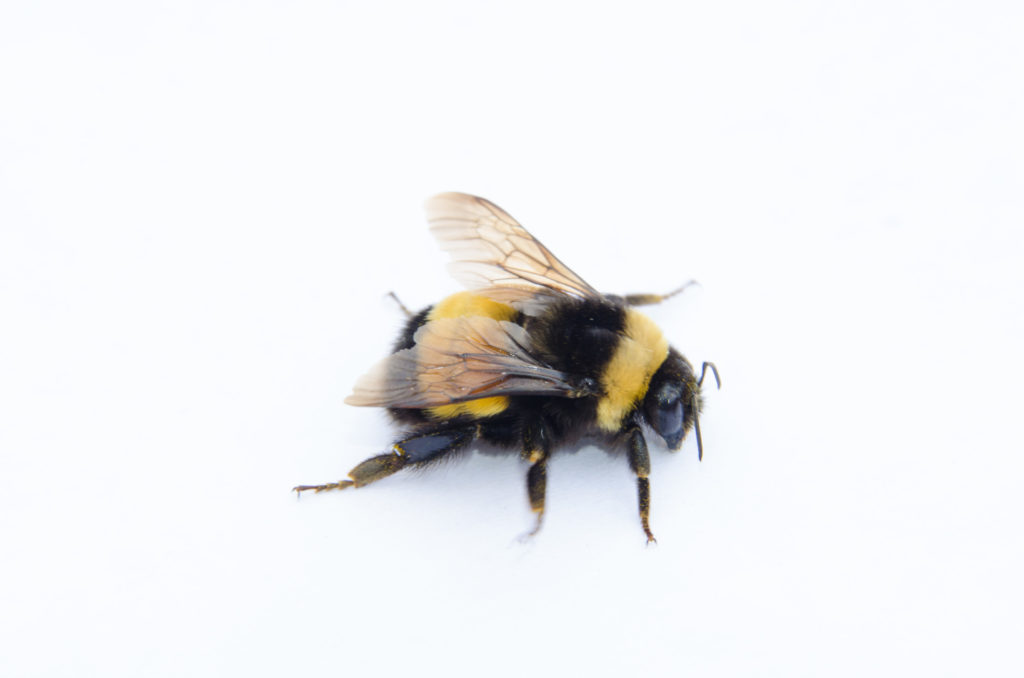
A queen Yellow-banded Bumble Bee (Bombus terricola) warming up after a few minutes in the refrigerator.
Once a bee has been captured and transferred to a vial, it can be chilled for 2 – 10 minutes in a refrigerator or in a cooler. This will slow the bee down and allow for nicely staged photos as it warms up.
The Hand Method (at your own risk)
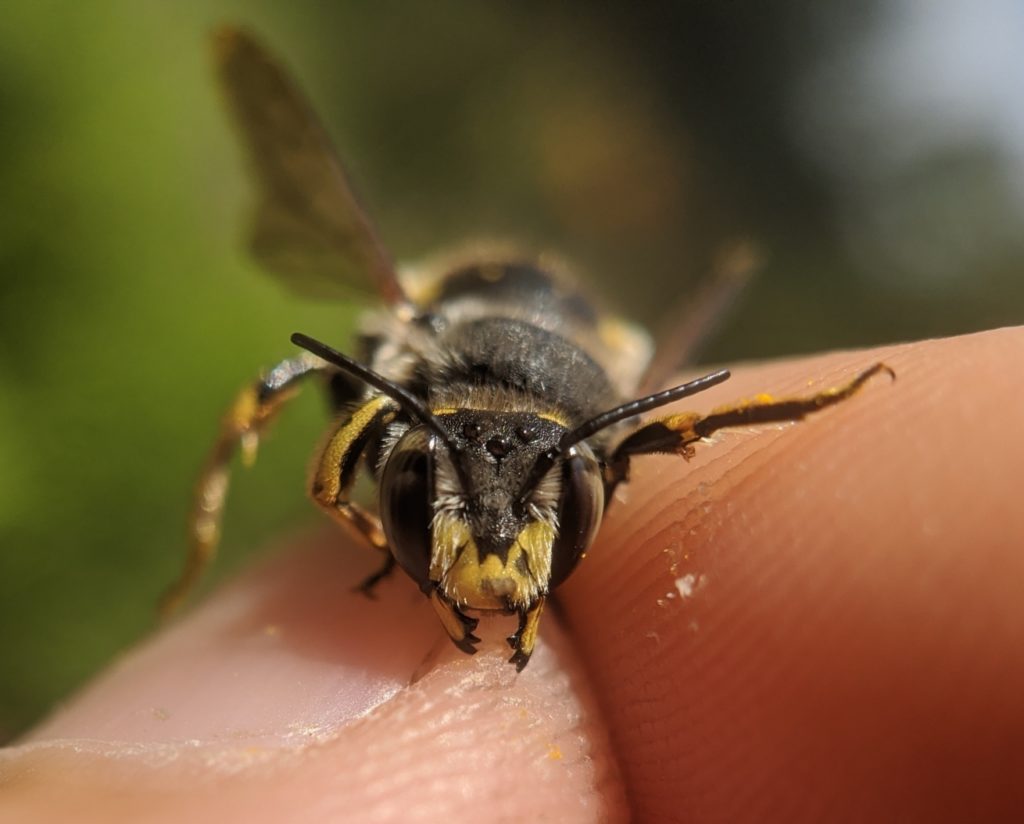
A male European Wool Carder Bee held briefly for a photograph
Some bees can even be held by hand for quick photos. Males don’t have stingers, and females of many of the smaller species are unable to puncture human skin with their stinger. Their bodies are remarkably tough and will not be harmed. Do not attempt if you are allergic to bee stings (it is not always easy to tell males from females).
The Net and Video Method
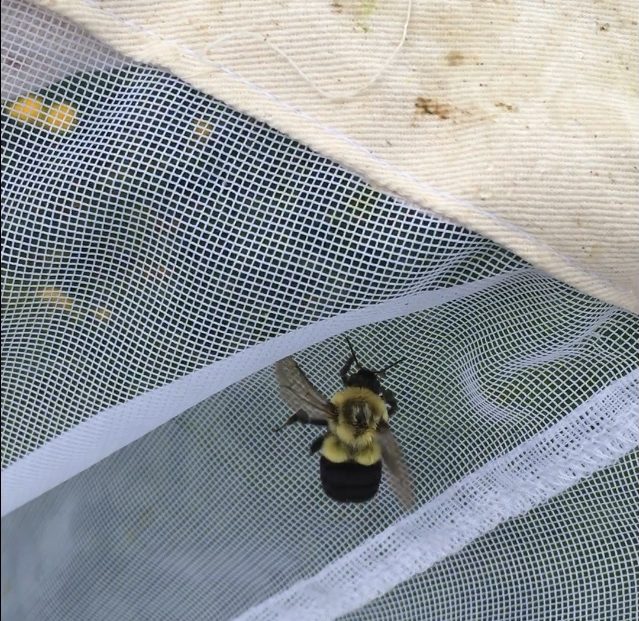
A queen Common Eastern Bumble Bee on its way out of a net
Large and distinctive species can be documented quickly using a net and the video function on a smartphone. First net a bee and swoosh the net a few times to get it to the bottom. While the bee is still trapped, open the video app on your phone and get ready to film the bee as you release it from the net. After the bee is released, the video can be reviewed and the best angles saved as a screenshot and uploaded to iNaturalist.
Bring the bees to you
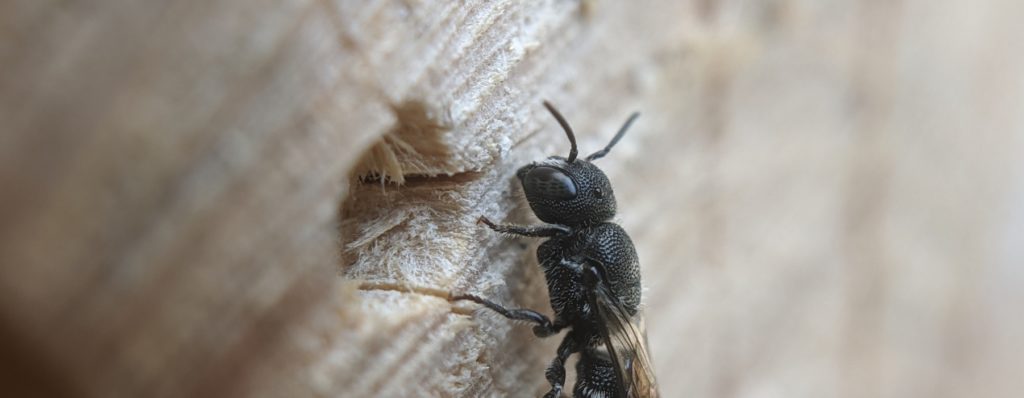 Building a bee hotel can be an effective way to bring bees into a predictable spot. Placing the hotel in an easily accessible spot with good lighting can provide great opportunities to watch and photograph a number of bee species as they build and provision nests. Details on bee hotels can be found here.
Building a bee hotel can be an effective way to bring bees into a predictable spot. Placing the hotel in an easily accessible spot with good lighting can provide great opportunities to watch and photograph a number of bee species as they build and provision nests. Details on bee hotels can be found here.
Even really bad photos can occasionally be identifiable and useful!
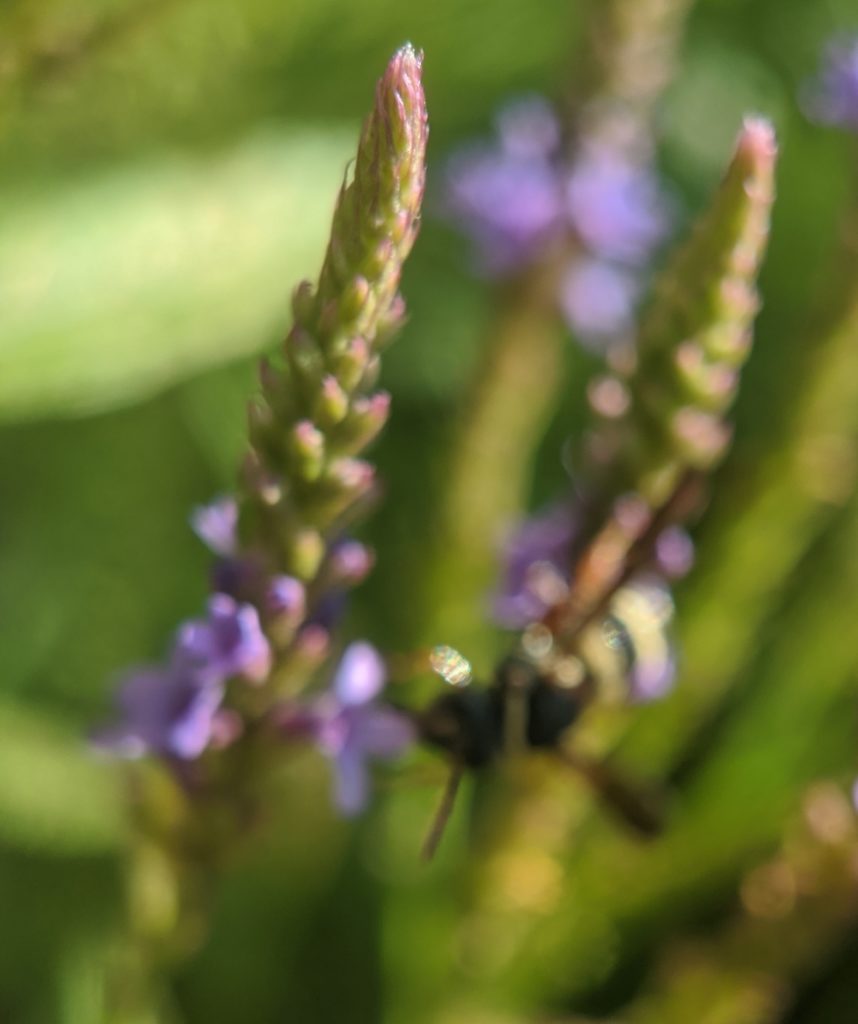
The first Washington County record of the Two-banded Cellophane-Cuckoo (Epeolus bifasciatus), confirmed through iNaturalist.
Just because your photo isn’t going to win any National Geographic awards, doesn’t mean it’s not useful. Some species are distinctive enough to be identified from a distant blur.
